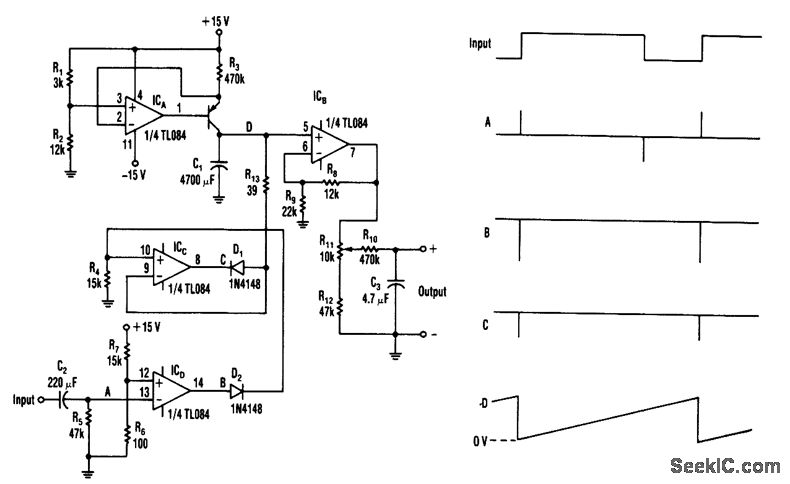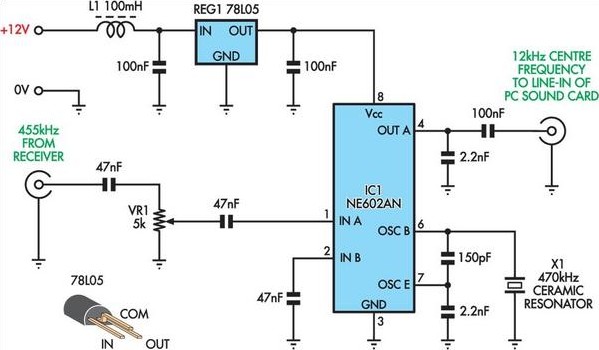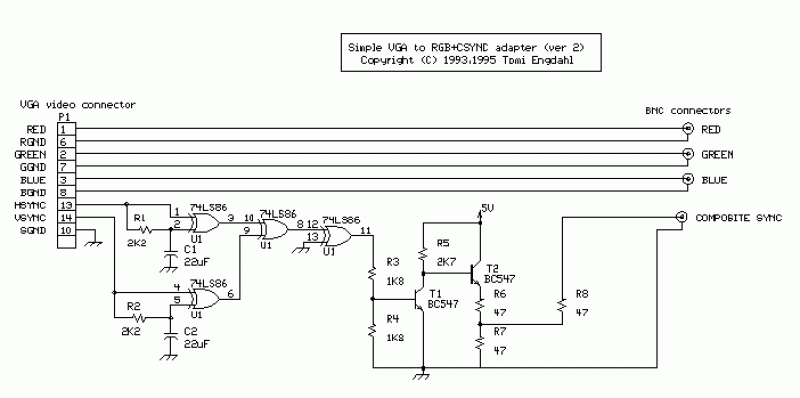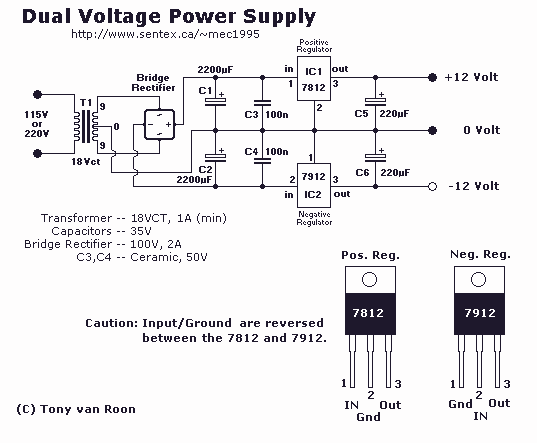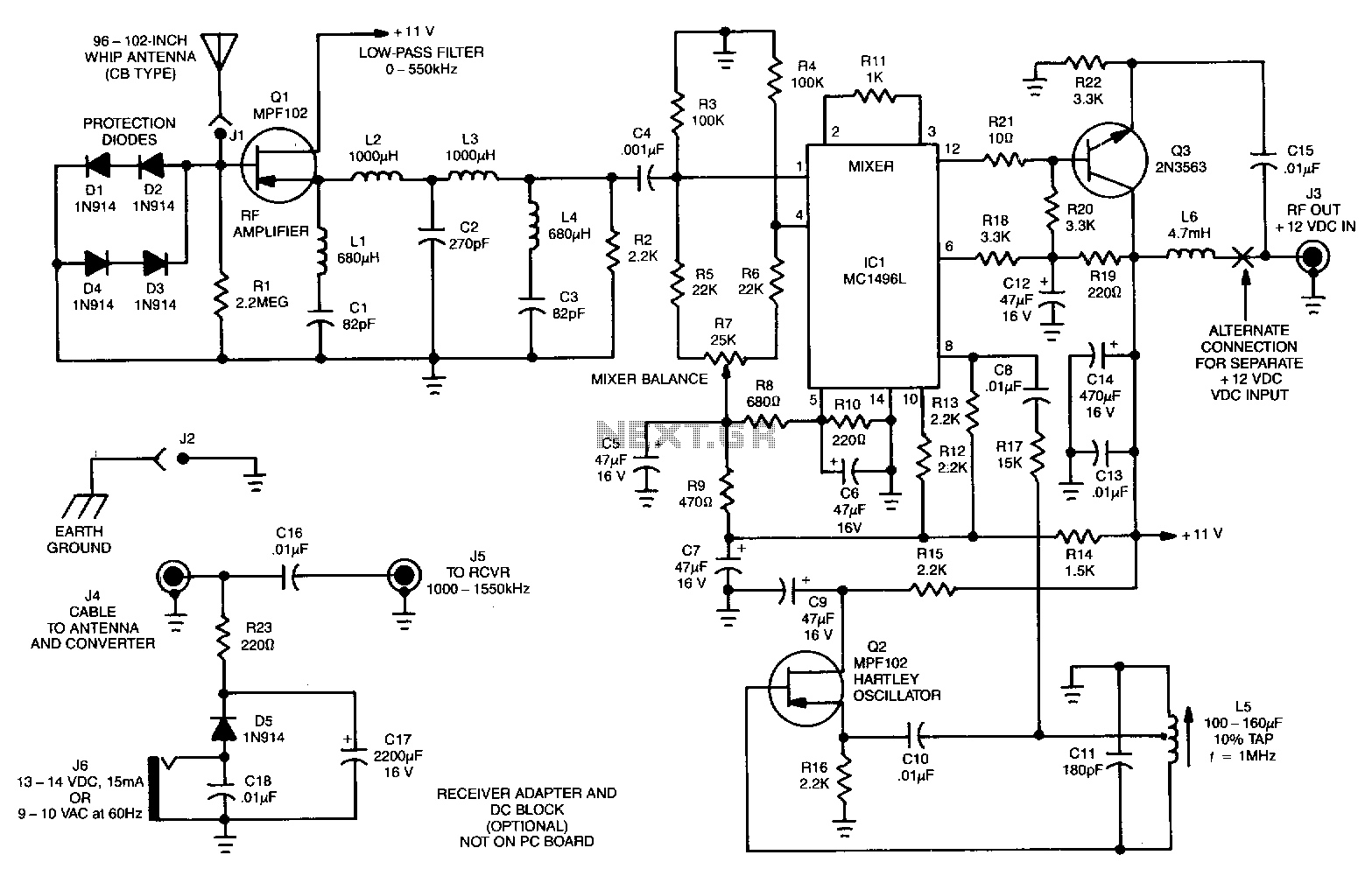
Inductorless 3-5 Volts Converter

By configuring a comparator and a transistor to control the oscillator in a charge pump circuit, it is possible to generate a regulated output of virtually any desired value. Charge pump integrated circuits (ICs) can either invert or double an input voltage (for example, converting 3 V to 3 V or 3 V to 6 V). The charge pump itself does not regulate the output voltage, and a system running off 3 V typically cannot produce intermediate output voltage levels like 5 V. However, by incorporating a comparator and a reference device, arbitrary output levels such as 5 V can be created and regulated. Charge pump IC1 (a MAX660) includes an internal oscillator operating at 45 kHz, which transfers charge from capacitor C1 to capacitor C2, resulting in a rise in the regulated output. When the feedback voltage (pin 3 of IC2) exceeds 1.18 V, the output of comparator IC2 (a MAX921) goes high, deactivating the oscillator via transistor T1. The hysteresis of the comparator (which can be easily added to IC2) is set to zero in this case, as no hysteresis is necessary for the control loop. When enabled, the oscillator generates two cycles, which is sufficient to drive VOUT slightly above the desired level. Subsequently, the feedback mechanism turns the oscillator off again. The resulting output ripple primarily depends on the input voltage and the output load current. To reduce output ripple, albeit at the cost of circuit efficiency, a small resistor (approximately 1 ohm) can be added in series with C1. Additionally, the ripple is influenced by the value and equivalent series resistance (ESR) associated with C1; smaller values of C1 transfer less charge to C2, leading to smaller fluctuations in VOUT.
The charge pump circuit described utilizes a configuration that allows for flexible output voltage regulation. The MAX660 charge pump IC serves as the primary component, leveraging its internal oscillator to facilitate the transfer of charge between capacitors. The operation begins with the oscillator generating a frequency of 45 kHz, which is instrumental in moving charge from C1 to C2. This movement is critical for achieving the desired output voltage.
In this circuit, the feedback mechanism plays a vital role. The output voltage is monitored through pin 3 of the MAX921 comparator. When the feedback voltage surpasses the set threshold of 1.18 V, the comparator's output switches high, which effectively disables the oscillator through transistor T1. This feedback loop ensures that the output voltage remains stable and within the desired range.
The design incorporates a zero-hysteresis setting for the comparator, which is suitable for applications where precise voltage regulation is required without the need for delay in switching. The oscillator's brief operation, generating two cycles before being turned off, allows for fine control over the output voltage, preventing overshoot beyond the target level.
Output ripple is a critical consideration in this design. It is influenced by factors such as the input voltage, load current, and the characteristics of capacitor C1. Implementing a series resistor can help mitigate ripple but may reduce overall efficiency. The equivalent series resistance (ESR) of C1 also affects performance; lower capacitance values can lead to reduced charge transfer to C2, thus minimizing voltage fluctuations at the output.
In conclusion, this charge pump circuit effectively demonstrates how a comparator and transistor can be utilized to achieve regulated output voltages, allowing for versatility in applications requiring specific voltage levels. By carefully managing the components and their interactions, a reliable and efficient voltage regulation system can be established.By configuring a comparator and a transistor to control the oscillator in a charge pump circuit, you enable the pump to generate a regulated output of in principle any desired value. Charge pump ICs can either invert or double an input voltage (for example, 3 V to 3 V or 3 V to 6 V).
The charge pump itself does not regulate the output voltage a nd one running off 3 V is not normally capable of generating intermediate output voltage levels like 5 V. However, by adding a comparator and a reference device, you can create arbitrary output levels like 5 V and regulate them as well.
Charge pump IC1 (a MAX660) has an internal oscillator whose 45 kHz operation transfers charge from C1 to C2, causing the regulated output to rise. When the feedback voltage (pin 3 of IC2) exceeds 1. 18 V, the output of comparator IC2 (a MAX921) goes high, turning off the oscillator via T1. The comparator hysteresis (easily added on IC2) is zero here simply because no hysteresis is required in the control loop.
The oscillator when enabled generates two cycles, which is sufficient to drive VOUT slightly above the desired level. Next, the feedback turns the oscillator off again. The resulting output ripple will depend mainly on the input voltage and the output load current. Output ripple may be reduced at the expense of circuit efficiency by adding a small resistor (say, 1 ) in series with C1.
You`ll find that ripple also depends on the value and ESR associated with C1 - smaller values of C1 transfer less charge to C2, producing smaller jumps in V OUT. 🔗 External reference
The charge pump circuit described utilizes a configuration that allows for flexible output voltage regulation. The MAX660 charge pump IC serves as the primary component, leveraging its internal oscillator to facilitate the transfer of charge between capacitors. The operation begins with the oscillator generating a frequency of 45 kHz, which is instrumental in moving charge from C1 to C2. This movement is critical for achieving the desired output voltage.
In this circuit, the feedback mechanism plays a vital role. The output voltage is monitored through pin 3 of the MAX921 comparator. When the feedback voltage surpasses the set threshold of 1.18 V, the comparator's output switches high, which effectively disables the oscillator through transistor T1. This feedback loop ensures that the output voltage remains stable and within the desired range.
The design incorporates a zero-hysteresis setting for the comparator, which is suitable for applications where precise voltage regulation is required without the need for delay in switching. The oscillator's brief operation, generating two cycles before being turned off, allows for fine control over the output voltage, preventing overshoot beyond the target level.
Output ripple is a critical consideration in this design. It is influenced by factors such as the input voltage, load current, and the characteristics of capacitor C1. Implementing a series resistor can help mitigate ripple but may reduce overall efficiency. The equivalent series resistance (ESR) of C1 also affects performance; lower capacitance values can lead to reduced charge transfer to C2, thus minimizing voltage fluctuations at the output.
In conclusion, this charge pump circuit effectively demonstrates how a comparator and transistor can be utilized to achieve regulated output voltages, allowing for versatility in applications requiring specific voltage levels. By carefully managing the components and their interactions, a reliable and efficient voltage regulation system can be established.By configuring a comparator and a transistor to control the oscillator in a charge pump circuit, you enable the pump to generate a regulated output of in principle any desired value. Charge pump ICs can either invert or double an input voltage (for example, 3 V to 3 V or 3 V to 6 V).
The charge pump itself does not regulate the output voltage a nd one running off 3 V is not normally capable of generating intermediate output voltage levels like 5 V. However, by adding a comparator and a reference device, you can create arbitrary output levels like 5 V and regulate them as well.
Charge pump IC1 (a MAX660) has an internal oscillator whose 45 kHz operation transfers charge from C1 to C2, causing the regulated output to rise. When the feedback voltage (pin 3 of IC2) exceeds 1. 18 V, the output of comparator IC2 (a MAX921) goes high, turning off the oscillator via T1. The comparator hysteresis (easily added on IC2) is zero here simply because no hysteresis is required in the control loop.
The oscillator when enabled generates two cycles, which is sufficient to drive VOUT slightly above the desired level. Next, the feedback turns the oscillator off again. The resulting output ripple will depend mainly on the input voltage and the output load current. Output ripple may be reduced at the expense of circuit efficiency by adding a small resistor (say, 1 ) in series with C1.
You`ll find that ripple also depends on the value and ESR associated with C1 - smaller values of C1 transfer less charge to C2, producing smaller jumps in V OUT. 🔗 External reference
